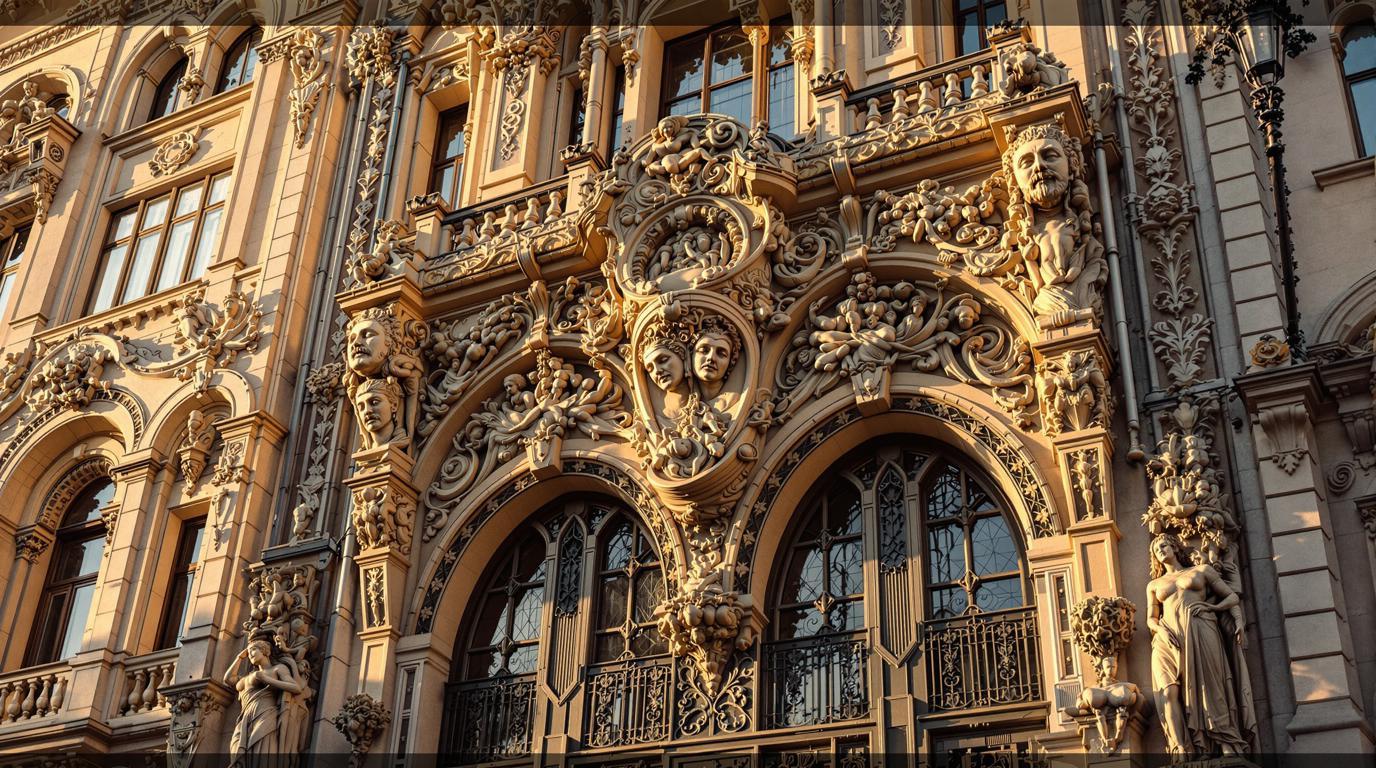Standing on Riga’s Alberta Street at dawn, I’m surrounded by a surreal parade of stone giants, mythical beasts, and screaming masks that cling to elegant facades in frozen perpetuity. The golden morning light catches on ornate flourishes that few travelers ever witness, transforming Latvia’s capital into an architectural fantasyland that feels like stumbling into a Belle Époque dream.
Where medieval cobblestones meet the world’s greatest Art Nouveau collection
Riga exists in a captivating architectural limbo, where medieval guild houses share the skyline with the world’s richest collection of Art Nouveau buildings. While most European capitals showcase scattered examples of this ornate early 20th-century style, Riga boasts over 700 Art Nouveau structures concentrated in its UNESCO-protected center.
“We Latvians have always been caught between worlds,” explains Karlis, my local guide, as we weave through Old Town’s narrow passages. “Our architecture tells that story – German merchants built our medieval core, Russian aristocrats funded our Art Nouveau explosion, and somehow both survived Soviet occupation.”
This architectural duality creates a city that feels like two distinct worlds seamlessly stitched together – one medieval, one modernist – each preserving its integrity while complementing the other in unexpected ways, much like this French town blending Roman and medieval architecture.
Three remarkable discoveries hidden beyond the guidebooks
The secret courtyard behind Elizabetes Street
The most photographed Art Nouveau facades on Alberta Street draw crowds, but the hidden inner courtyard at Elizabetes 10b reveals the movement’s authentic daily life. Access requires slipping through an unmarked wooden door between two shops, where the atmosphere shifts dramatically from tourist hub to local sanctuary.
Inside, original century-old tile work depicts stylized Baltic flowers climbing skyward, while residents tend to container gardens beneath elaborate wrought-iron balconies. Unlike the main streets, this interior world feels lived-in and genuine – a place where Art Nouveau isn’t preserved in amber but continues evolving in real time.
The forgotten tower of St. John’s Church
While St. Peter’s Church tower draws queues for its panoramic views, the lesser-known medieval spire of St. John’s offers a more intimate perspective with barely another visitor in sight. The narrow, winding staircase feels like climbing through history itself, each step worn smooth by centuries of feet.
The modest viewing platform reveals a perspective that medieval merchants would recognize – terracotta rooftops, weathered spires, and hidden courtyards reminiscent of this medieval Spanish village with Gothic architecture. From this vantage, Riga’s architectural timeline unfolds before you, from 13th-century stone foundations to Art Nouveau flourishes.
Savoring the Baltic’s most surprising culinary renaissance
Beyond the Old Town’s tourist-oriented dining scene, Riga’s Kalnciema Quarter hosts a Saturday morning farmers’ market where traditional Baltic flavors meet contemporary culinary innovation. Here, young Latvian chefs reimagine ancient preservation techniques – smoking, fermenting, curing – in dishes that honor the region’s harsh climate and agricultural heritage.
At a weathered wooden stall, I discover sklandrausis – traditional Latvian vegetable tarts with carrot-potato filling in a rye crust – made by an elderly woman whose family recipe spans generations. The earthy sweetness of the carrots contrasts with the sharp rye crust, creating a perfect balance that encapsulates Latvia’s resilient spirit.
Essential insider guidance for the savvy traveler
Timing your architectural exploration
The Art Nouveau district takes on entirely different characters throughout the day. Visit Alberta Street before 9am for photographer’s light without tour groups, mid-afternoon for access to the Art Nouveau Museum (closed Mondays), and at sunset when the elongated shadows emphasize the buildings’ dramatic sculptural elements.
Unexpected accommodation
Skip the international chains and opt for a stay at one of the carefully restored Art Nouveau apartments available for short-term rental in the quieter residential areas of the district. Many feature original parquet flooring, decorative ceiling moldings, and the tall windows characteristic of the period, offering an immersive experience similar to Toulouse’s hidden Renaissance courtyards.
Finding yourself between worlds
As twilight settles over Riga, the boundary between its medieval and Art Nouveau districts softens, creating a dreamlike transition between centuries. This architectural dialogue between epochs creates a city that defies easy categorization – neither fully Eastern nor Western, neither entirely ancient nor modern.
Perhaps that’s Riga’s most precious gift: a reminder that beauty emerges most powerfully in these in-between spaces, where different worlds collide and create something entirely new.
